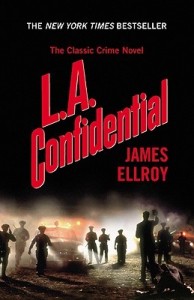Writing rich characters can be difficult. I’ve been told I should take a stereotype then add something unexpected—as though two dimensions plus one quirk equals a round character. But humanity is more than two layers deep and your audience can tell the difference. Agnieszka Holland’s film In Darkness, written by David Shamoon, displays some of the richest characters I’ve seen in a while.
I will admit to Holocaust fatigue and I was leery of this film for that reason. I’ve been reading various memoirs and histories of the horrors for over two decades. While there is no end to the human suffering that the Nazis inflicted, there is a limit to the nuance I can absorb from these stories. It was daring to try and tell a new story. But the movie succeeded.
I don’t normally review movies (though I might start doing more) but this one is related to TWO books: In the Sewers of Lvov by Robert Marshall and The Girl in the Green Sweater: A Life in Holocaust’s Shadow Krystyna Chiger.
Our Hero
The protagonist, Pan Socha, is a Polish sewer worker during WWII who makes extra money on the side by looting the homes of recently relocated Jews in Lvov. When he hears some Jews trying to escape the ghetto by breaking into the sewer, he could make the obvious choice—the one that is “in character,” but his character is richer than that. Throughout the movie he continues to wrestle between his selfish motivations (greed, not getting shot by Nazis) and his need to do the human thing and help save those lives.
Socha continues to wrestle with his base greed throughout the film, but he also displays growth. There is a moment where he defends Jews as a people (a very dangerous thing to do) while lecturing his friend in a public place. At another time, he steps from the shadows to save the life of a Jew who had given him nothing but trouble.
Socha made Spielberg’s Oskar Schindler look two dimensional. Yes, there is the moment at the end when Schindler cries because he could have saved more Jews, but it felt like a tacked on emotion rather than a breakdown. Socha evolves and grows throughout the film, and though he is imperfect, I loved him for it.
Other characters
Socha’s wife has a central conflict that is very simple, but the way it manifests is beautiful and rich. She initially teaches her husband that Jews are just like everyone else and gives him a lesson on religion to prove it. But when she finds out he is helping Jews, she is livid. You can see her wrestling between her humanity and her need to preserve her family. She does this over and over throughout the film.
Klara Keller also has conflicting desires—she is trying to keep alive the sister she never really liked. Yanek is forced to choose between his wife and his lover and even then can’t find peace. In fact, every character in this film seems torn which befits a movie about such a turbulent time.
Perhaps that’s where some Holocaust portrayals fail—they turn into tales of good and evil. Holland and Shamoon forced me to examine the good and evil within myself. Perhaps the best reason to create robust, lifelike characters is to encourage your readers to examine that complexity within themselves.
Note: I completely failed to credit the writer in the original post. This has been revised to reflect the exemplary work of David Shamoon.
If this review made you want to watch the movie, pick up a copy of In Darkness from Powell’s Books. Your purchase keeps indie booksellers in business and I receive a commission.
 Watching L.A. Confidential again last night, I started to reflect on my long history with James Ellroy. I was young when I first started reading him—maybe eleven or twelve—and The Black Dahlia was not my first of his books. When I started with Clandestine or Brown’s Requiem, the noir voice had me, a girl who had grown up on the movie The Big Sleep but never read Raymond Chandler, hooked. The Black Dahlia was the second book of his that I read and as a burgeoning woman, I wanted to be as beautiful and as desired as Betty Short. I was young enough and immortal enough that the extreme violence committed against her didn’t even phase me. Even after reading L.A. Confidential and several other books, I didn’t key into it or how it might be affecting me.
Watching L.A. Confidential again last night, I started to reflect on my long history with James Ellroy. I was young when I first started reading him—maybe eleven or twelve—and The Black Dahlia was not my first of his books. When I started with Clandestine or Brown’s Requiem, the noir voice had me, a girl who had grown up on the movie The Big Sleep but never read Raymond Chandler, hooked. The Black Dahlia was the second book of his that I read and as a burgeoning woman, I wanted to be as beautiful and as desired as Betty Short. I was young enough and immortal enough that the extreme violence committed against her didn’t even phase me. Even after reading L.A. Confidential and several other books, I didn’t key into it or how it might be affecting me.